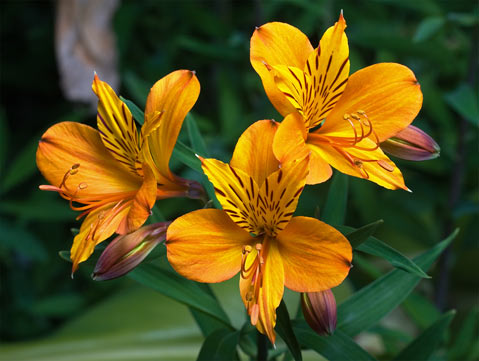Rebloom
Perennials Produce More Blossoms When Faded Ones Removed

Gardeners plot and plan to have something beautiful and winsome in their gardens all year around. They plant their favorite flowering plants successively for months so that the spent blooms can be removed to make room for the next generation. Spring-flowering species give way to high-summer favorites that fade to leave those late-season stars in the spotlight. One often overlooked management strategy is to plant perennials that can produce more blossoms if the faded ones are removed.
Many plants have the evolutionary urge to just keep making flowers for as long as possible to continue the species. Flowers contain the sex organs that create the seeds for another generation. In many species, this procreational trait can be exploited for quite another purpose. Seeds (with some notable exceptions) and their pods are usually not the most ornamental parts of a plant, but they are definitely the end product that a plant is programmed to produce. To encourage plants to keep blooming instead of making seeds, gardeners have only to snip, pinch, and prune off the spent blossoms.
Not all plants will respond to this treatment, but luckily, there are quite a few that do it to one degree or another. Some will just put on their best show continually if whatever flowers that have finished their cycle are promptly removed. Alstroemeria (the evergreen types most common in the nursery trade) bloom throughout most of the year in the South Coast region. In inland areas and if soil temperatures get quite warm, they will shut down. The best way to encourage new bud formation is to firmly grasp the stem of a spent inflorescence and pull it out. Cutting the stems will not work nearly as well. Don’t wait for them to wither and dry; pull away as soon as all the flowers have dropped.
Others in this category include most garden varieties of Agastache. These southwest United States and Mexican natives are variously called hummingbird mint and hyssop. They all have aromatic foliage and, like their relatives in the sage family, flower clusters of many small tubular flowers on erect spikes. Once they are done, remove and wait for more.
There are some daisy relatives that usually form a low rosette of leaves before shooting up a flower that will also respond to deadheading. Coreopsis grandiflora is a fairly prolific bloomer, but will shine even brighter if the flowers are removed as they fade. Coneflowers (in the genus Rudbeckia) and their close cousins in the Echinacea species will respond to an early harvest, which is perfect, as they make excellent cut flowers. So go ahead and bring them inside for a bouquet, and expect them to respond with even more flowers later in the season. Most of the “daisies” in the genus Erigeron will also bloom their hearts out if given a periodic shearing throughout the warmer months.
Others that respond to a timely haircut are the catnips and catmints, Nepeta species. Cut the plants back by half in summer to encourage new growth and blossoms. Blue marguerite (Felicia amelloides) will pop right back after the old flowers and their woody stems are reduced (they bloom on new growth only). Once Gaura lindheimeri has started to put its energy into seed production instead of flowers, it is time to cut it back, as well (besides, it is notorious for self-seeding, spreading into places that may not be ideal from a design standpoint). Geum has a few species that produce low mounds of foliage that tall flowers rise above. Cut them back to encourage more. Sneezeweed is not a very inviting name, but species in the genus Helenium, with their profusion of daisy-like flowers, can create a stir in the garden and continue to do it for months if their old flowers are dispatched to the compost pile in a timely fashion.
A few candidates are decidedly bi-seasonal. They bloom in spring, and if their flowers are removed, they will muster the strength to bloom again in fall. A number of iris varieties fall into this category, and they will be labeled as “reblooming” to indicate this wonderful trait. Somehow, the sight of an iris flower in August or September is even more magical than the ones that appear in April. Several of the perennial species of Lobelia will also reliably grace the moist parts of the garden with classy, colorful flower spikes at the end of summer if lovingly tended early on.
Deadheading is always a good garden maintenance practice, but in some cases, the reward is even more than might be expected.



